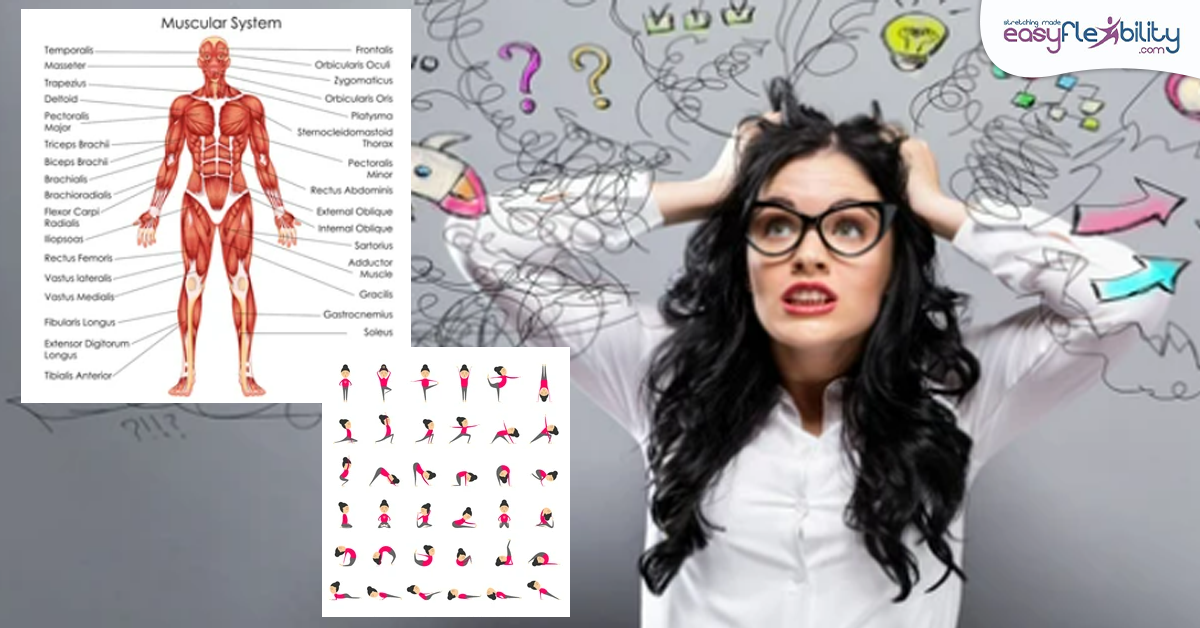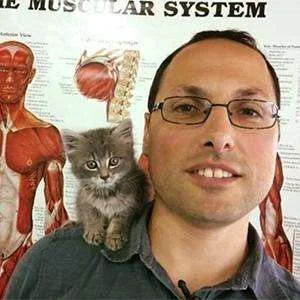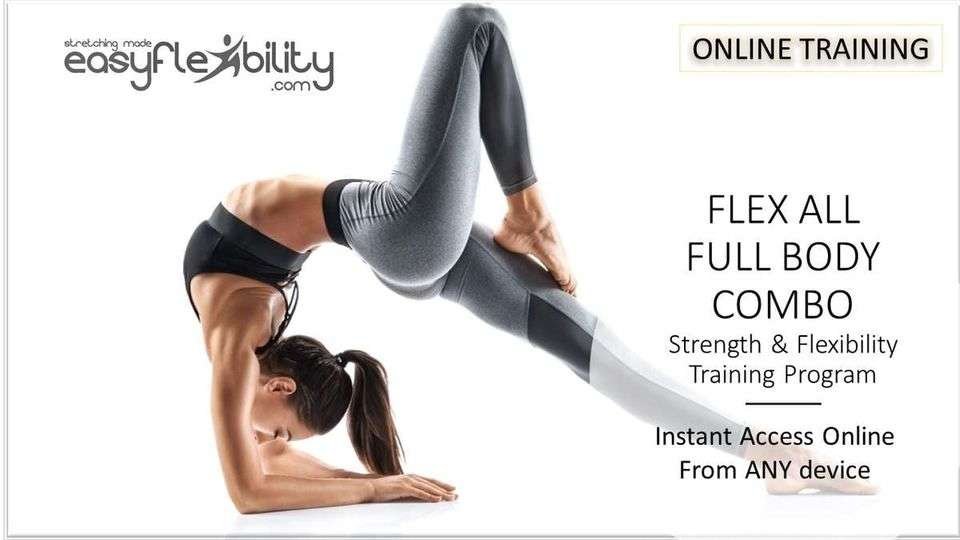Total Body Stretch Routine for Improved Flexibility
Jun 10, 2024


Is It Possible to Stretch Every Muscle in Your Body in a Single Workout?
Unlocking Full-Body Flexibility: Can You Stretch Every Muscle in One Session? With over 600 skeletal muscles in the human body, the idea of stretching each one during a single workout session might seem ambitious, even if you have plenty of time.
When considering a full-body stretching routine aimed at enhancing flexibility, it's crucial to reflect on your goals. Are you aiming for significant flexibility improvements, or is your objective simply to stretch for the sake of stretching? Identifying your purpose will guide you in choosing the most effective approach for your flexibility journey.
If your goal is to stretch multiple muscles simultaneously, you might consider engaging in combination stretching techniques. These methods, such as the bridge or downward facing dog, are effective for targeting several muscles concurrently, assuming you possess the necessary flexibility to perform them. This approach allows you to efficiently stretch a wide range of muscles in one go.
Conversely, if your aim is to enhance your flexibility, attempting to stretch your entire body in a single workout session may not yield significant results. There's a saying that goes, "When you chase everything, you catch nothing," which is particularly relevant in this context. Focusing your efforts more strategically is likely to be more effective for improving flexibility.
Conversely, if your aim is to enhance your flexibility, attempting to stretch your entire body in a single workout session may not yield significant results. There's a saying that goes, "When you chase everything, you catch nothing," which is particularly relevant in this context. Focusing your efforts more strategically is likely to be more effective for improving flexibility.
“I fear not the man who has practiced 10,000 kicks once, but I fear the man who has practiced one kick 10,000 times.”
Bruce Lee's famous quote, “I fear not the man who has practiced 10,000 kicks once, but I fear the man who has practiced one kick 10,000 times,” underscores the power of focused practice. This principle is increasingly recognized in yoga classes, where there's a shift towards concentrating on specific muscle groups or stretching directions in a single session. For instance, a class might target the hips, hamstrings, or focus on backbending positions, interspersed with other poses that aid in realigning the body. The emphasis is on a singular direction.
This approach is more effective than scattering a variety of stretches throughout one session. However, focusing on similar stretches only in a single session and then switching to a completely different focus in the next session, days later, doesn't usually yield the best results.
Consider the difference between an MMA fighter and a boxer. An MMA fighter trains in wrestling, grappling, kicking, punching, knee strikes, and elbow strikes, while a boxer dedicates their training to boxing alone. Consequently, while an MMA fighter may have proficient hand techniques, they typically do not match the level of a boxer who focuses solely on boxing. The fight between Conor McGregor and Floyd Mayweather illustrates this point well: focus yields mastery.
This approach is more effective than scattering a variety of stretches throughout one session. However, focusing on similar stretches only in a single session and then switching to a completely different focus in the next session, days later, doesn't usually yield the best results.
Consider the difference between an MMA fighter and a boxer. An MMA fighter trains in wrestling, grappling, kicking, punching, knee strikes, and elbow strikes, while a boxer dedicates their training to boxing alone. Consequently, while an MMA fighter may have proficient hand techniques, they typically do not match the level of a boxer who focuses solely on boxing. The fight between Conor McGregor and Floyd Mayweather illustrates this point well: focus yields mastery.
When planning a full-body routine, you might choose a set of exercises that target the fundamental movements of your joints, focusing on basic anatomical actions. These could include flexion and extension of the hip, hip adduction and abduction, internal and external rotation of the hip, knee flexion, plantar flexion and dorsiflexion of the ankle and foot, as well as toe flexion and extension. Don't forget about the spine – incorporating flexion, extension, rotation, and lateral bending movements. Shoulder movements can include flexion, extension, internal and external rotation, and for the neck, consider flexion, extension, and rotation exercises. Incorporating a stretch for each of these actions can provide a comprehensive stretch for the entire body. While this approach may not significantly increase flexibility, it ensures a thorough full-body stretch.
When aiming for overall body flexibility, it's important to determine your goal. Are you simply seeking a slight improvement and a pleasant sensation in each muscle, or are you pursuing significant flexibility gains?
Keep in mind that achieving flexibility requires more than just stretching exercises; it necessitates complementing those stretches with strength and movement exercises to maintain the gained flexibility. The reason EasyFlexibility sees rapid results is due to its targeted approach, such as aiming for a split. By identifying and elongating the specific muscles required for a full split, and bolstering them with strength and movement exercises, along with tailored warm-ups, goals are reached and maintained more effectively. This allows for progression to the next technique once mastery is achieved.
To sum up, while a total body stretch routine is beneficial, attaining full body flexibility demands focusing on specific muscle groups or skills. By mastering these areas one at a time, you can gradually achieve overall body flexibility.
To sum up, while a total body stretch routine is beneficial, attaining full body flexibility demands focusing on specific muscle groups or skills. By mastering these areas one at a time, you can gradually achieve overall body flexibility.
Flex All Full Body Combo
You Can Get Super Flexible Now!
This COMBO includes 13 programs plus lifetime access to our community of experts and students ready to welcome you and guide you, to share experiences and motivate each other forwards. Are you ready to achieve your goal? Don’t miss our FLEX ALL FULL BODY COMBO to make your dream come true. This will make you SUPER FLEXIBLE easy, fast and painless.

About the Author:
Paul Zaichik is an Exercise Science Expert, author of multitude of books, and the creator of Zaichik Stretching Technique (formely known as Kinesiological Stretching Technique). His speciality is flexibility training as well as body weight conditioning. His innovative method is designed to have maximum carry over into specific athletic techniques. Paul is the author of books and DVD’s on the topic of flexibility, martial arts and bodyweight training. Over the years, Paul Zaichik has worked with a variety of individuals including athletes, entertainers, and military personnel. His ElasticSteel Method of Athletic Conditioning programs, EasyFlexibility Programs and Zaichik Stretching Techniques are used world wide by both professional and amateurs with great success.





